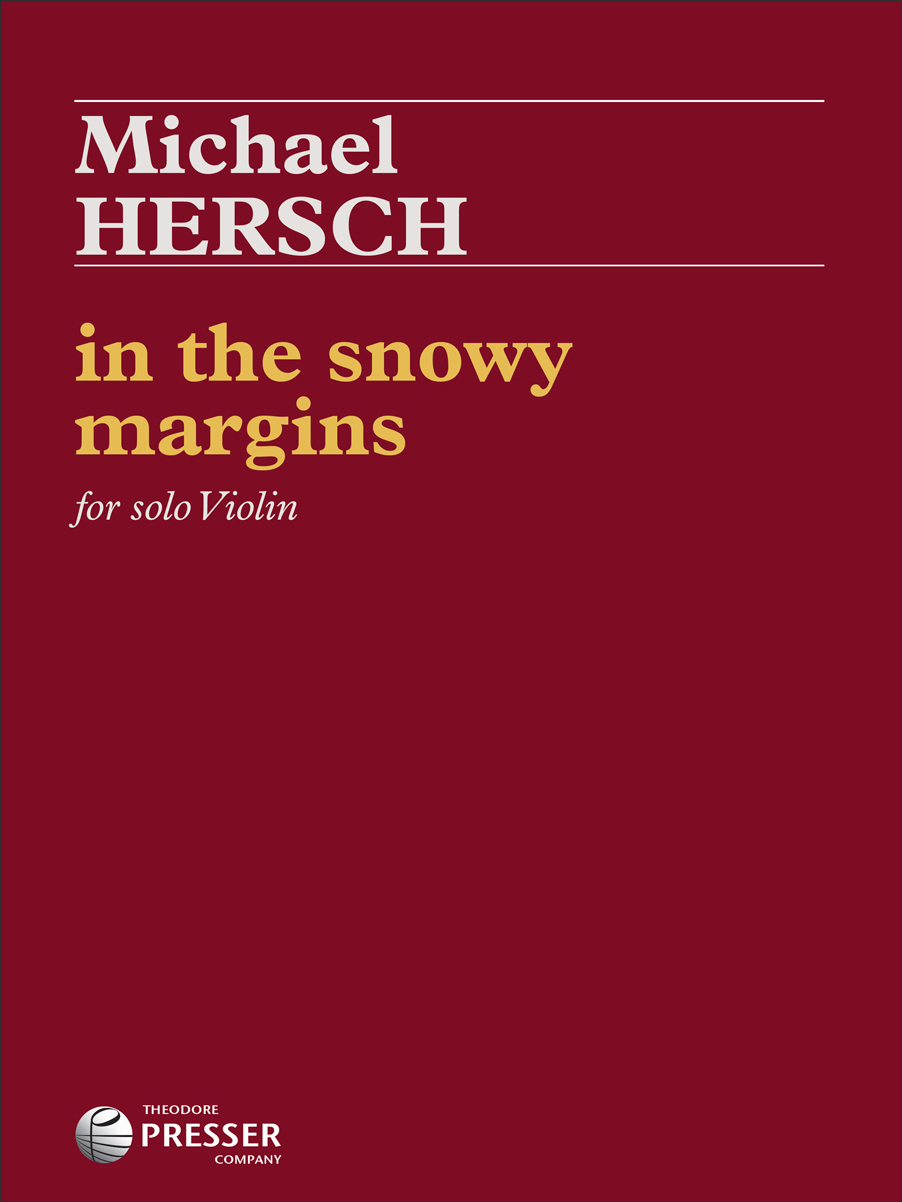Theodore Presser Company / cf / 114-41875
in the snowy margins
$16.99
Michael Hersch
Scroll down for Related Items listings.
Strings.
The seven-movement in the snowy margins might be considered a sort of atomic suite, as each movement is succinct, yet a microcosmic powerhouse inspired by “The Comet,” by Polish writer and Holocaust victim Bruno Schulz. Hersch’s intensity is expressed through dramatically captivating violin gestures, pushing the boundaries of texture, technique, and emotion.
The seven-movement "in the snowy margins" might be considered a sort of atomic suite, as each movement is succinct, yet a microcosmic powerhouse inspired by “The Comet,” by Polish writer and Holocaust victim Bruno Schulz. Hersch’s intensity is expressed through dramatically captivating violin gestures, pushing the boundaries of texture, technique, and emotion.
Michael Hersch’s in the snowy margins was written in 2010. Like much of his work, it is grounded in literature and art. The title is drawn from a short story, The Comet by Polish writer, poet, and artist, Bruno Schulz (1892-1942). This forms the last of his collection The Street of Crocodiles, published in 1934. Schulz was shot by a Nazi officer in 1942.Both the title of Hersch’s work, and the ‘motto’ found on the composer’s manuscript (‘Thus far and no further. But what has become of the end of the world…’) are to be found in The Comet. It’s interesting that in in the snowy margins, unlike his earlier Fourteen Pieces which were inspired by the poetry of Primo Levi, Hersch chose to not title each individual movement with a quote. However his choices of text are applied, there is a clear quality of distillation. In every case, the texts which the composer has chosen to eschew lie beneath the music, akin to the greater mass of an iceberg, submerged, but imminent.Hersch also has very particular taste in visual art, and there seems to be common ground between the intensely expressionist drawing of Schulz, and those of Michael Mazur, which inspired his string quartet Images from a Closed Ward. The parallels between these artists reflect common traits shared between these two pieces, which provide a window on how the music should be approached, expressively and technically. I would argue, that from a violinist’s point of view, this pertains directly to how bow and left hand should approach the string: the febrile vibrancy of both Mazur and Schulz’s pencil and charcoal strokes, perhaps what T.S. Eliot called the ‘circulation of the lymph’, in every gesture, speaks to the intense experience, physically and emotionally, of playing (and hearing) this music. There is an intense sense of ‘truth to materials’ at every moment, the sense that every note sings on the edge of, or even beyond, total collapse.— Peter Sheppard-Skaerved
Voicing/Instrument: Violin - Score





